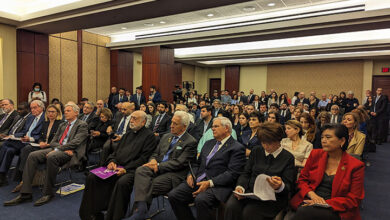
Moody’s Investors Service (“Moody’s”) has today assigned Ba3 foreign and local-currency insurance financial strength ratings (IFSRs) to Export Insurance Agency of Armenia ICJSC (EIA). The outlook is stable.
EIA’s Ba3 IFSRs reflect (1) its b1 Baseline Credit Assessment (BCA), and (2) moderate probability of support from the government of Armenia (Ba3 stable), resulting in a notch uplift above the BCA.
Ratings rationale
EIA is currently the only export insurance company in Armenia. It was established by the government to promote Armenian export within the framework of the export-oriented industrial policy of the republic of Armenia.
EIA’s b1 BCA benefits from its solid capital adequacy relative to net total exposure with 90% of insurance risk reinsured by Swiss Reinsurance Company Ltd (Swiss Re, Aa3 stable), as well as sound financial flexibility and low financial leverage. At the same time, these strengths are tempered by the company’s modest size in global terms, low granularity of its insurance book and limited geographical diversification, investments in high-risk assets in Armenia and weak underwriting profitability.
EIA provides export and pre-export credit insurance against political and commercial risks. Its share in GPW of credit insurance sector in Armenia (including loan insurance and other financial losses insurance) amounted to around 50% as of Q3 2021.
The insurer’s diversification is constrained by its limited geographical and products diversification with some sizeable single-name exposure. It has concentrations of export exposure in Russia (Baa3 stable), given the structure of Armenia’s exports and long-standing relations with Russia.
EIA’s asset-quality metrics reflect a high concentration of its investments in domestic assets, which mainly comprise current accounts and deposits with Armenia-based banks and investments in local bonds issued by the government of Armenia. The company’s high-risk investments, mainly deposits with local banks, accounted for around 138% of its equity as of 31 December 2020.
The insurer has strong capital adequacy benefitting from the significant portion of insurance risk exposure reinsured by Swiss Re. The company’s shareholders’ equity as a proportion of total assets (equity-to-assets ratio) has been consistently high at above 60%. EIA’s underwriting leverage is robust at 0.02x as of end 2020 compared with that of global peers, driven by a low level of insurance risk relative to its capital.
EIA’s underwriting profitability is weak with its credit insurance combined ratio of 162% in 2020, albeit the trend is improving. Poor underwriting profitability reflects the company’s still low scale of business operations and challenging operating environment in Armenia.
The assignment of new ratings to EIA also takes into account the effectiveness of its governance as part of Moody’s assessment of environmental, social and governance (ESG) considerations. Moody’s does not have any particular governance concerns for EIA.
Government support
Moody’s assigns a moderate probability of government support resulting in a one notch uplift above EIA’s BCA. This is based on the current full ownership of EIA by the Government of Armenia (Ba3 stable) and its public policy role in promoting Armenian export within the framework of the Export-Oriented Industrial Policy of the Government of Armenia. In the future the government has indicated that it may seek investment from international investors, but the state will continue to hold a controlling stake of not less than 51%. EIA’s Chair of the Board of Directors is Deputy Minister of Economy three out of seven board members are representatives from the Ministry of Economy. There is no track record of government support in terms of provided guarantees or capital increase.
Stable outlook
The stable rating outlook on EIA’s IFSR is in line with the stable outlook on Armenia’s Ba3 sovereign rating. It also reflects Moody’s expectation that EIA will maintain its current financial metrics within the next 12-18 months.








